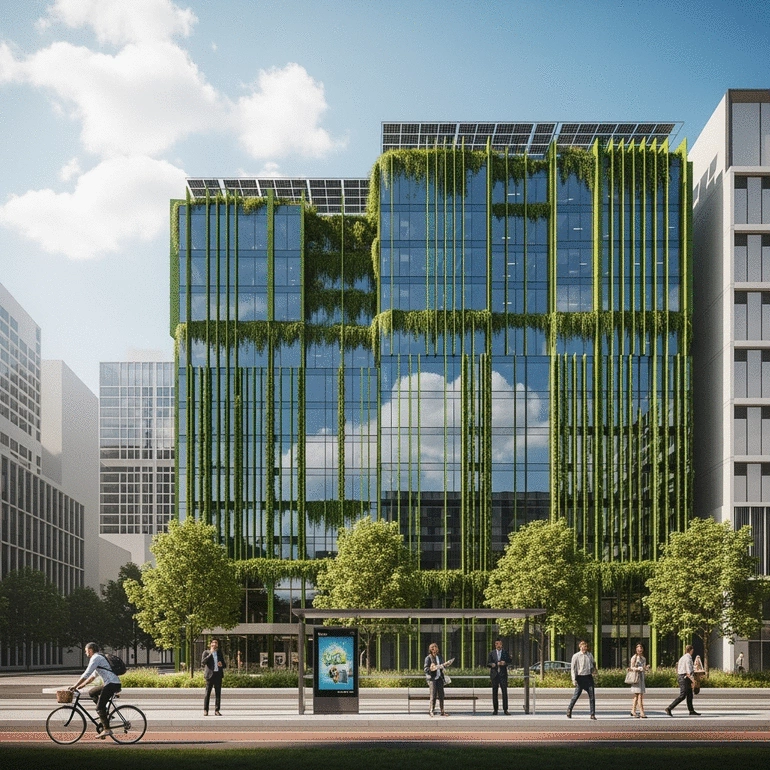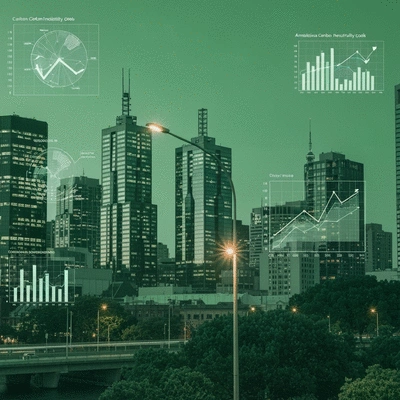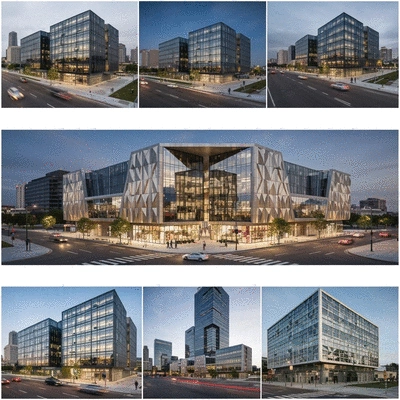
What if every small change you make could contribute to a greener future? In Melbourne's Central Business District, the journey towards reducing our carbon footprint is not just an ambitious goal; it's a necessity for sustainable urban life.
Melbourne is committed to a sustainable future, with ambitious goals and supportive policies to reduce its carbon footprint. Below is an overview of the city's key targets and the governmental strategies in place to achieve them. For more insights into how design contributes to urban sustainability, explore Melbourne CBD's sustainable urban design.
➔By 2040:Achieve Carbon Neutrality
➔By 2030:Reduce greenhouse gas emissions by 50%
➔Transition:100% renewable energy for city operations
✓Incentives:Energy retrofits & renewable installations
✓Building Codes:Strict emphasis on energy efficiency
✓Programs:Promoting public transport & cycling
Reducing our carbon footprint is vital for ensuring the sustainability of urban environments like Melbourne's Central Business District (CBD). As our city continues to grow, the demand for energy and resources also rises. By prioritizing carbon reduction, we can create a healthier environment for everyone, from residents to visitors. Have you ever stopped to consider how your daily activities contribute to this footprint? Let’s explore the reasons why addressing this issue matters so much.
Urban areas are significant contributors to global carbon emissions, with buildings being responsible for a large percentage of energy consumption. By focusing on reducing these emissions, we not only combat climate change but also enhance the quality of life in our vibrant CBD. From improving air quality to fostering community resilience, the benefits are far-reaching!
Understanding the impact of our carbon footprint in urban settings is crucial. Each building, street, and park plays a role in our city’s overall sustainability efforts. By taking action to reduce emissions, we can:
Every small effort can contribute to a larger change. Whether it's through energy-efficient renovations or choosing sustainable transport options, our actions matter in this fight against climate change. To learn more about how Melbourne's work trends are adapting to these changes, check out Melbourne CBD's work adaptation trends.

Melbourne is embarking on an ambitious journey towards carbon neutrality by 2040. This goal reflects the city’s commitment to creating a sustainable future where both residents and businesses can thrive. As part of this initiative, the local government has developed various strategies to encourage buildings in the CBD to adopt eco-friendly practices.
Some of the key targets include:
These goals not only align with global sustainability efforts but also empower the Melbourne community to participate actively in creating a greener future.
The city’s local government plays a pivotal role in supporting sustainability initiatives through effective policies. Recent measures aim to encourage building owners to invest in energy-efficient upgrades while also providing necessary resources and support. Have you ever wondered how these policies affect you as a resident or business owner?
Some key policies include:
By fostering collaboration between government, businesses, and the community, we can create a united front in our efforts to achieve these sustainability goals. It’s an exciting time to be part of the Melbourne CBD!
What sustainable practices have you adopted in your daily life? Share your thoughts below:
As we strive for a greener Melbourne CBD, it's essential to embrace sustainable practices that not only reduce our carbon footprint but also enhance the quality of life for all residents and visitors. I’ve seen firsthand how small changes can lead to significant impacts. Many building owners are taking proactive steps to incorporate sustainability into their properties, paving the way for a healthier urban environment!
One of the most effective ways to support these initiatives is through financial incentives and support programs designed specifically for retrofits. By leveraging available resources, building owners can transform their properties into models of efficiency and sustainability.
There are several grants and rebates available that can help offset the costs of undertaking sustainable upgrades. Here’s a list of some key programs to consider:
Utilizing these financial incentives is a smart move for property owners looking to make meaningful changes while managing costs. Remember, being informed about these opportunities can make all the difference in your sustainability journey!
When considering upgrades, it's crucial to identify which grants and rebates apply to your specific situation. Reach out to local government resources or sustainability-focused organizations for detailed information on available options. This can include:
With the right support, the path to a sustainable building becomes much clearer!

The National Australian Built Environment Rating System (NABERS) is a valuable tool for assessing energy performance in buildings. Building owners should aim for a high NABERS rating, as it not only demonstrates commitment to sustainability but also enhances property value and attractiveness to tenants. Here’s why it matters:
As a community, we can make strides towards a more sustainable Melbourne CBD by embracing these initiatives and setting high energy performance standards!
Building a culture of sustainability is not just a trend; it’s a necessity for the future of our city. As a passionate advocate for sustainable living, I believe that building owners play a crucial role in fostering this culture. Encouraging tenants and stakeholders to participate actively can lead to meaningful change over time. For more on local activities that promote community engagement, explore Melbourne CBD's hidden event gems.
Creating a culture of sustainability involves more than just implementing energy-efficient upgrades; it also requires engaging all building occupants. Here are some effective strategies:
These initiatives not only build community but also reinforce a shared commitment to a greener Melbourne CBD!
For stakeholders looking to take the next step, it’s important to develop a strategic plan that outlines sustainability goals. This can include:
Taking these steps can create a ripple effect, inspiring others in the community to join the movement toward sustainability!
One of the most powerful tools we have is the ability to influence behavior. By implementing behavioral change techniques, building owners can encourage tenants to adopt sustainable practices. Simple actions, like providing recycling bins and promoting public transportation options, can make a significant difference. Let’s work together to cultivate a culture of sustainability that lasts for generations to come!
Melbourne aims to achieve carbon neutrality by 2040 and reduce greenhouse gas emissions by 50% by 2030. The city also plans to transition to 100% renewable energy for all city operations.
Local government policies include incentives for energy retrofits and renewable energy installations, strict building codes emphasizing energy efficiency, and programs promoting public transport and cycling to reduce car dependency.
Building owners can access federal government grants, state rebates, and local council programs designed to help offset the costs of energy-efficient upgrades, renewable energy solutions, and improvements to insulation and HVAC systems.
NABERS (National Australian Built Environment Rating System) is a tool for assessing a building's energy performance. A high NABERS rating demonstrates a commitment to sustainability, enhances property value, attracts tenants, and helps meet regulatory compliance.
Building owners can foster a culture of sustainability by hosting workshops on sustainable living practices, creating informative materials about reducing carbon footprints, and encouraging feedback and suggestions from tenants regarding sustainability efforts.
Melbourne CBD Insights is dedicated to empowering you with expert advice and practical guides for navigating life in Melbourne's vibrant Central Business District. We focus on sustainable living and local insights to help you thrive.
